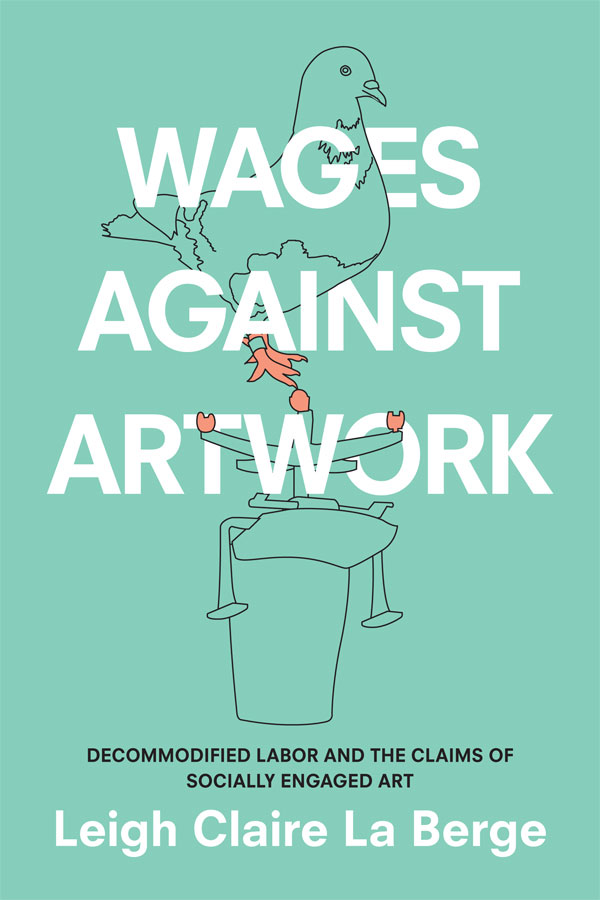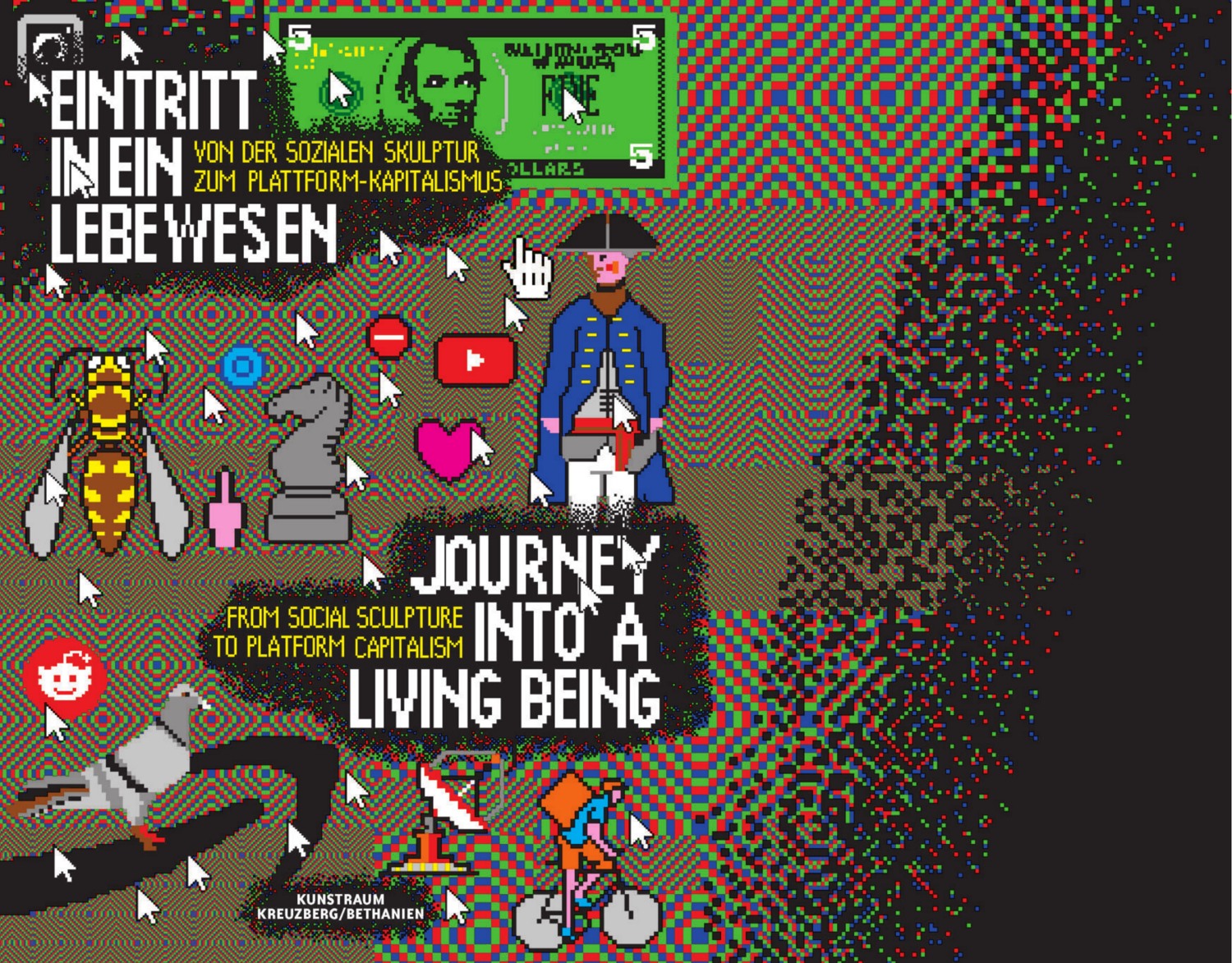Leigh Claire La Berge: Wages Against Artwork: Decommodified Labor and the Claims of Socially Engaged Art (2019)
Filed under book | Tags: · aesthetics, animal, art, capital, capitalism, children, commodity, debt, economics, labour, money, neoliberalism, socially engaged art, value, work

“The last twenty years have seen a rise in the production, circulation, and criticism of new forms of socially engaged art aimed at achieving social justice and economic equality. In Wages Against Artwork Leigh Claire La Berge shows how socially engaged art responds to and critiques what she calls decommodified labor—the slow diminishment of wages alongside an increase in the demands of work. Outlining the ways in which socially engaged artists relate to work, labor, and wages, La Berge examines how artists and organizers create institutions to address their own and others’ financial precarity; why the increasing role of animals and children in contemporary art points to the turn away from paid labor; and how the expansion of MFA programs and student debt helps create the conditions for decommodified labor. In showing how socially engaged art operates within and against the need to be paid for work, La Berge offers a new theorization of the relationship between art and contemporary capitalism.”
Publisher Duke University Press, Durham, NC, August 2019
ISBN 1478004231, 9781478004233
xiii+261 pages
Reviews: Noni Brynjolson (Field J), Lee Painter-Kim (Women’s Studies), Amber Taylor (E3W).
Interviews with author: Andreas Petrossiants (e-flux, 2018, podcast), Wen Zhuang (LA Review of Books, 2020), Andreas Petrossiants (Brooklyn Rail, 2020), Pierre d’Alancaisez (New Books Network, 2021, podcast).
PDF (11 MB)
Internet Archive (multiple formats)
Eintritt in ein Lebewesen. Von der sozialen Skulptur zum Plattform-Kapitalismus / Journey Into a Living Being: From Social Sculpture to Platform Capitalism (2020) [German/English]
Filed under catalogue | Tags: · art, capitalism, data, internet, platform, privacy, social media, surveillance

“In 1977, Joseph Beuys presented his installation Honey Machine at the Workplace at documenta 6, in which tubes ran into the exhibition rooms, through which honey was pumped. The work symbolized Beuys’ idea of the expanded concept of art and of social sculpture. “Everyone is an artist” is his famous motto –not because everyone can paint, dance or make music, but because we all contribute through our productivity to a collective creativity that can be weighed as real capital and societal potential, to which Beuys ascribed the formula “art = capital.” Honey as the “spiritual nutrition of the cosmos” (Beuys) is the embodiment of this collective creativity.
These days, we deliver our creative “honey” voluntarily to internet companies like Google, Facebook, Twitter, TikTok or Amazon. Computers and smartphones, online speakers and fitness wristbands upload a large portion of our data to these companies’ servers. Even rental bikes and e-scooters collect our location data. Our every click, every Like, every photo posted and every online comment is fuel for the companies of “surveillance capitalism” (Shoshana Zuboff). They use our data to sell advertising, predict our behavior, optimize their algorithms and AI, and to keep competing companies out of the market as much as possible.
The exhibition Journey Into a Living Being takes its name from a lecture Beuys gave on social sculpture at documenta. It traces the conceptual trajectory to the present, in which the internet and social media are replete with offers of creative services, but where only few reap the financial rewards. It brings together artworks spanning forty years with the aim of deciphering what has come to pass between the development of social sculpture and the rise of platform capitalism and the gig economy, and how this process is reflected in art.”
Edited by Tilman Baumgärtel
Publisher Kunstraum Kreuzberg/Bethanien, Berlin, 2020
ISBN 9783000652608, 3000652604
111 pages
Exhibition (18.5-16.8.2020)
WorldCat
PDF (6 MB)
Comment (0)Boris Arvatov: Art and Production (1926–) [Russian, English]
Filed under book | Tags: · art, capitalism, constructivism, everyday, production, productivism, proletariat, sculpture

“Boris Arvatov‘s Art and Production is a classic of the early Soviet avant-garde. Now nearing a century since its first publication, it is a crucial intervention for those seeking to understand the social dynamic of art and revolution during the period.
Derived from the internal struggles of Soviet Constructivism, as it confronted the massive problems of cultural transformation after ‘War Communism’, Arvatov’s writing is a major force in the split that occurred in the revolutionary horizons of Constructivism in the early 1920s. Critical of early Constructivism’s social-aesthetic process of art’s transformation of daily life – epitomised in studio-based painting, photography and object making – Arvatov polemicises for the devolution of artistic skills directly into the relations of production and the factory.
Whilst acknowledging the problems of a pure factory-based Productivism, Arvatov remains overwhelmingly committed to a new role and function for art outside the conventional studio and traditional gallery. Addressing issues such as artistic labour and productive labour, the artist as technician, art and multidisciplinarity and a life for art beyond ‘art’ – finding new relevance amidst the extensive social turn of contemporary participatory art – Art and Production offers a timely and compelling manifesto.”
Publisher Proletkult, Moscow, 1926
132 pages
English edition
Edited by John Roberts and Alexei Penzin
Introduction by John Roberts
Afterword by Alexei Penzin
Translated by Shushan Avagyan
Publisher Pluto Press, London, 2017
ISBN 9780745337364, 0745337368
160 pages
Reviews: Celluloid Liberation Front (Brooklyn Rail, 2017), Noel Halifax (Socialist Review, 2018).
Iskusstvo i proizvodstvo (Russian, 1926, 45 MB)
Art and Production (English, 2017, EPUB; PDF, added 2020-8-6)

